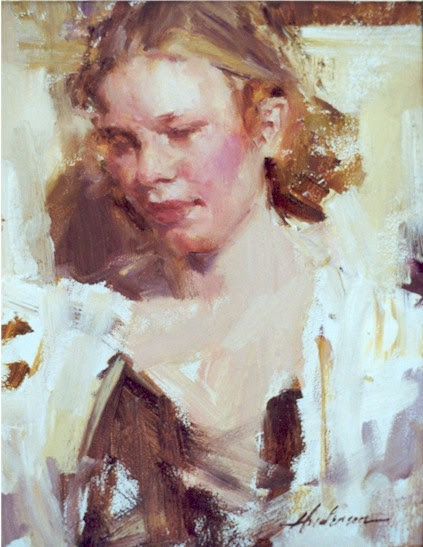Edges are boundaries that form shapes. One of the most powerful tools artists have available is the ability to suggest these boundaries rather than stating them definitively--the lost or softened edge. It's powerful because it engages the viewer by suggestion rather than spelling out everything in complete detail. Our attention goes to defined areas first and our gestalt fills in where edges are lost or softened. The work becomes more about expression and less about definition.
Here's the complete story of a duck in water with all edges defined.
In this next version, we've lost an edge at the bottom left where values of the duck and of the water are similar, we've softened edges in most areas except for the duck's head. Now, close your eyes for a moment, then look at this version. Do you notice how your attention goes first to the head? Do you feel a more expressiveness in the image?
Many of our contemporary artists make use of losing edges to give greater unity to their work and to make their work more expressive. Carolyn Anderson is notable among these. Here's an example of one of her portraits.
Notice how the light values from the background merge into the light values of the subject's clothing and neck area. Anderson has given us just enough clues to allow our gestalt to complete the story.



No comments:
Post a Comment